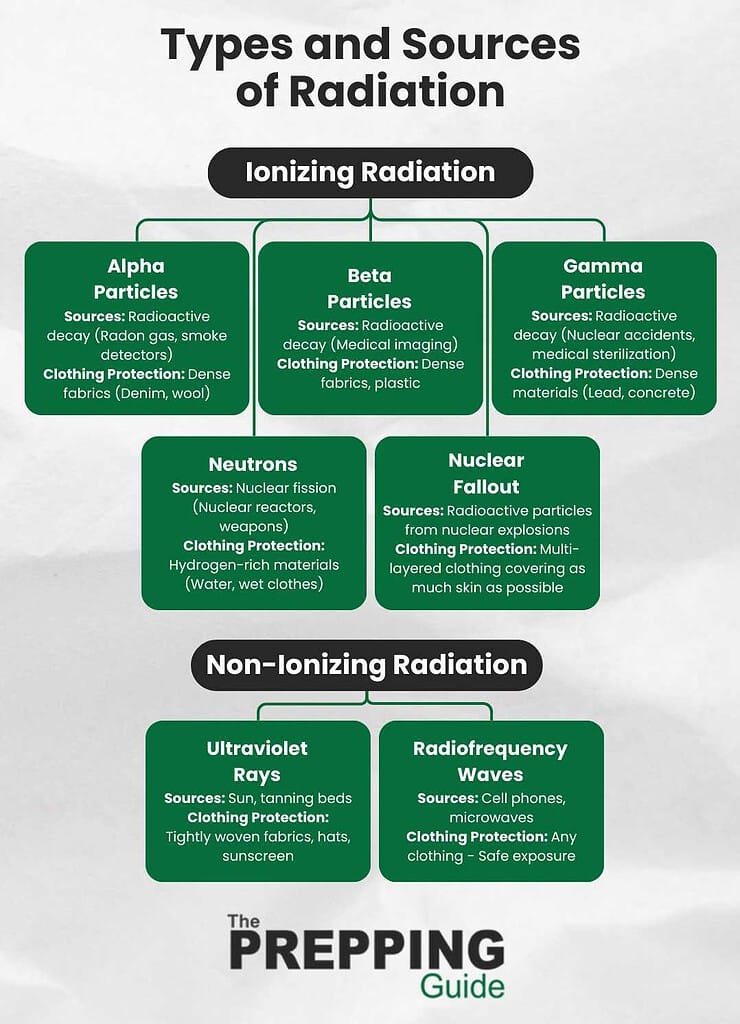
Understanding Radiation and Its Types
When it comes to understanding radiation and its types, it is crucial to be aware of a few key points. There are two main types of radiation: ionizing radiation and non-ionizing radiation. Ionizing radiation, such as gamma rays and X-rays, has enough energy to cause damage to DNA and other cellular structures. On the other hand, non-ionizing radiation, which includes radio waves and visible light, is generally considered safe at low levels of exposure.
Sources of Radiation
There are both natural and artificial sources of radiation that emit harmful rays. Natural sources include cosmic rays from space, radioactive materials in the Earth's crust, and radon gas. Synthetic or man-made sources include nuclear power plants, X-ray machines, and radioactive materials used in medicine and industry. It is important to be cautious of these sources in order to minimize radiation exposure and ensure safety.
Potential Health Risks Associated with Radiation
Exposure to radiation can pose various potential health risks, depending on factors such as the type of radiation, duration of exposure, and proximity to the source. One primary concern is the increased risk of cancer development, as ionizing radiation can damage DNA within cells. Additionally, acute radiation syndrome (ARS) may occur in the aftermath of high-dose radiation exposure, leading to symptoms such as nausea, vomiting, and damage to organs like the heart and lungs.
Radiation Protection Standards
When it comes to radiation protection, it is crucial to adhere to regulatory guidelines that ensure your safety. These guidelines, established by national and international organizations, outline the maximum permissible dose of radiation exposure and provide instructions on minimizing risks. The International Commission on Radiological Protection (ICRP) and the Environmental Protection Agency (EPA) are examples of organizations that set radiation protection standards.
Industry-Specific Standards for Protective Clothing
When safeguarding yourself from radiation exposure, wearing appropriate protective gear is crucial. The industry has developed specific requirements for protective clothing to ensure maximum safety. Fabric technology plays a vital role in designing clothing that can effectively shield against harmful radiation. The choice of materials, construction, and design are carefully considered to minimize the penetration of radiation particles and provide complete coverage while allowing ease of movement.
What to Wear to Protect from Radiation
When it comes to protecting yourself from radiation, there are two key things to consider: radiation-blocking clothing and personal protective equipment (PPE).

Radiation-Blocking Clothing
To protect yourself from radiation effectively, it is important to wear clothing with shielding abilities. Materials like lead or tungsten are commonly used in radiation-blocking clothing as they have the ability to absorb and scatter radiation. The thickness of the fabric also plays a crucial role in shielding ability, with certain materials offering better protection than others. Multi-layering can provide enhanced protection, and it is important to choose materials that are comfortable and allow ease of movement.
Personal Protective Equipment (PPE)
Wearing the appropriate personal protective equipment (PPE) is crucial for ensuring radiation safety. Different types of PPE, such as radiation masks, lead aprons, gloves, goggles, radiation detectors, and face shields, provide varying levels of protection depending on the type and duration of radiation exposure. Careful selection and proper maintenance of PPE are essential for optimal protection.
Environmental Factors
The type of clothing you wear for radiation protection may vary depending on the radiation environment. For high-radiation areas such as nuclear power plants or medical facilities, specialized protective clothing like lead aprons may be necessary. Garment design, material selection, and incorporating radiation protection into daily attire are important considerations for shielding individuals from harmful radiation.
Maintenance and Care of Radiation-Protective Clothing
To ensure the effectiveness and durability of radiation-protective clothing, proper maintenance and care are essential. Mild detergents should be used for cleaning, and specific care techniques may be required for different materials. Storing the clothing in a cool, dry place away from direct sunlight and regularly inspecting for signs of wear or tear are also important. Remember that radiation-protective clothing has a limited lifespan and should be replaced according to manufacturer guidelines.
Debunking The Myth of “Complete Protection”
It is important to understand that radiation-protective clothing does not offer complete protection against radiation. While it significantly reduces exposure, it should be seen as part of a comprehensive safety approach that includes maintaining a safe distance from radioactive sources, using shielding materials when necessary, and following proper decontamination procedures.
Dress for Safety: Navigating the Invisible Radiation Threats
Knowledge and understanding are key to protecting yourself from radiation. By being aware of the different types of radiation, adhering to radiation protection standards, and wearing appropriate clothing and personal protective equipment, you can minimize your exposure to harmful rays. Remember that no outfit can offer complete protection, but by taking the necessary precautions, you can navigate different radiation environments with confidence.
 —————————————————————————————————————————————————————————————–
—————————————————————————————————————————————————————————————–
By: thepreppingguide
Title: What to Wear to Protect Yourself from Radiation in a Nuclear War
Sourced From: thepreppingguide.com/what-to-wear-to-protect-from-radiation/
Published Date: Thu, 18 Jan 2024 03:33:46 +0000

